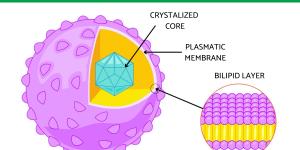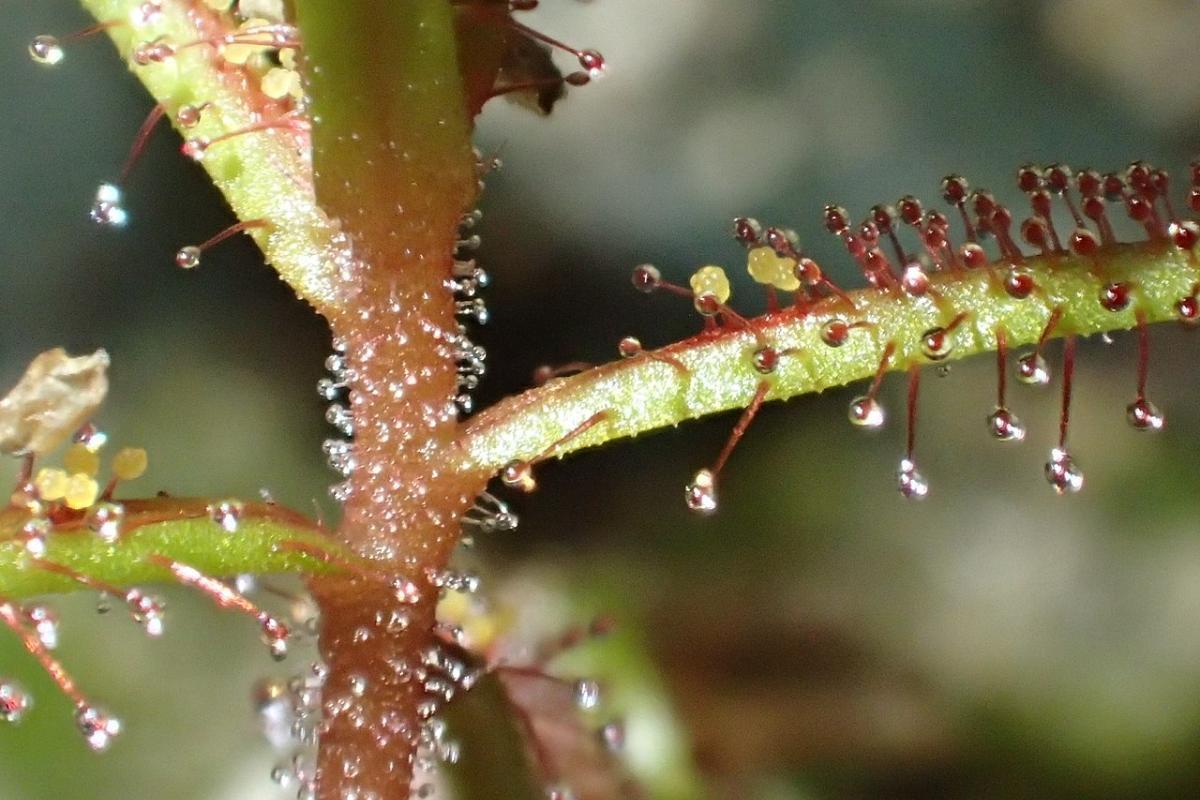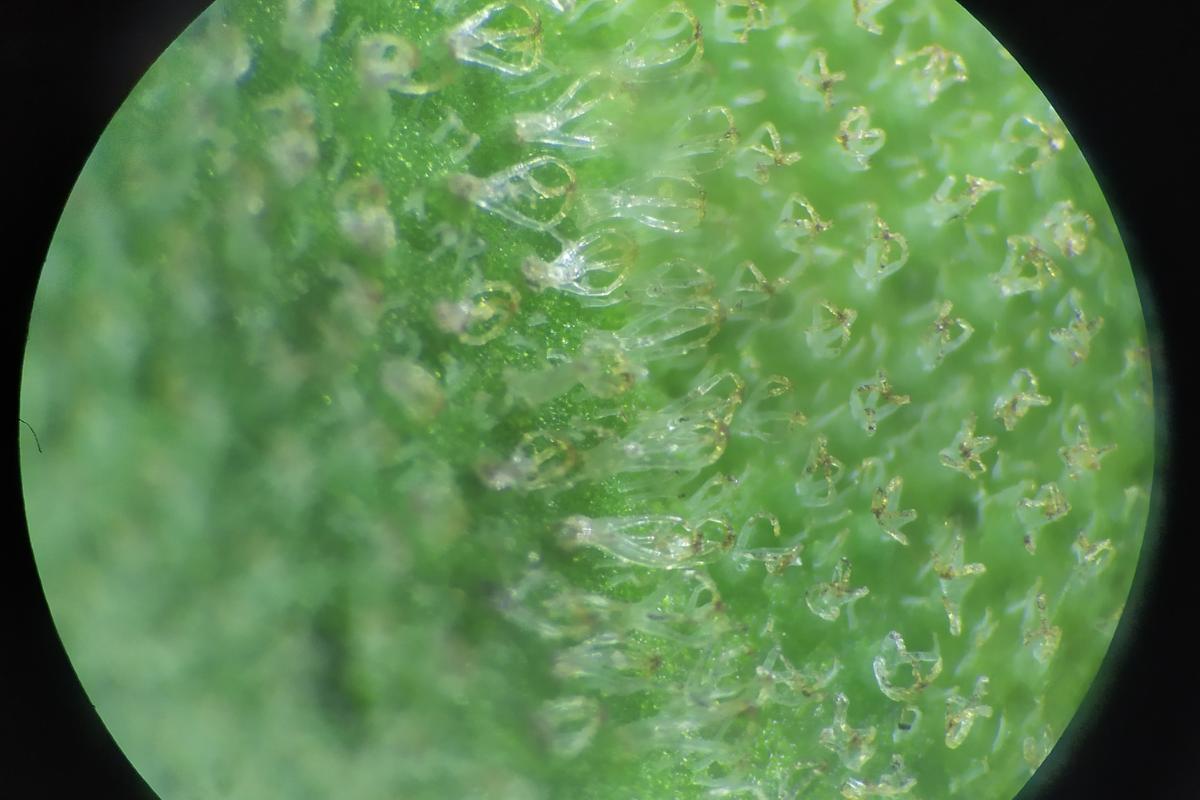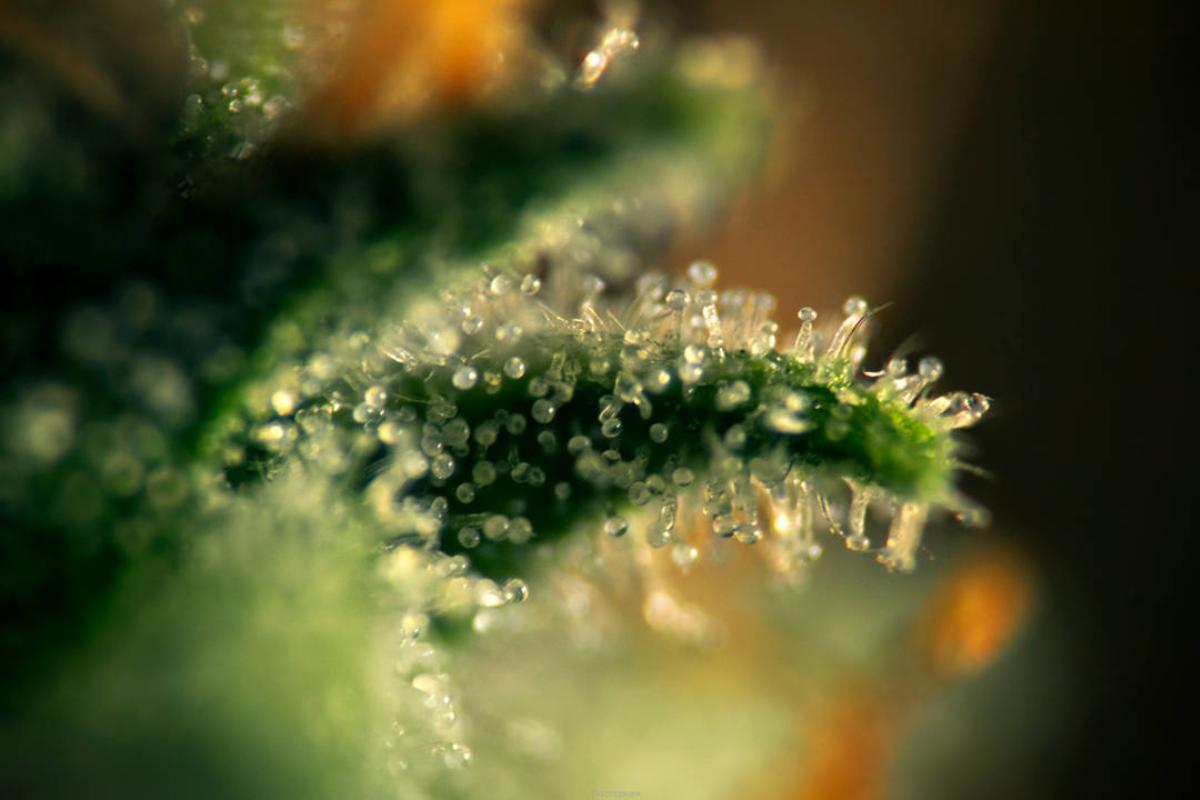What Are Trichomes in Plants?


Trichomes are epidermal appendages in plant organisms. Their function is to protect the plant organism against external factors and to carry out various metabolic processes. The types of trichomes in plants can be classified according to different factors, including the presence of glands, the number of cells, shape, morphology, location and density.
Although plants seem like immobile and simple organisms, they actually have exceptional mechanisms for adaptation. Their structural complexity can vary, but plants are often more specialized than we first imagine. Trichomes are structures found on certain plants which appear like hairs. Depending on the plant, there are different types with a broad range of functions and classifications. You can learn more with our thedailyECO article explaining what are trichomes in plants?
What are trichomes?
Trichomes are appendages that emerge from plant organisms that take the form of fine outgrowths. While they can appear like hairs, they can be of varying structures, with some being long, short, scaly or stumpy, depending on the plant species. While they are associated with plants, they can also appear on lichen, algae and protists.
There are other protuberances that can emerge from plant structures, but only those that come out of the epidermis are called trichomes. For example, rose thorns come from the sub-epidermis, so they are not classified as trichomes. Learn about the latter structure with our article on caring for a crown of thorn plants.

What is the function of trichomes?
Depending on the plant, trichomes have different functions which allow them to survive in their environment. Some of these functions of trichomes include their ability to:
- Defend against attacks by herbivorous insects that want to eat the plant, because they are uncomfortable when the insect tries to approach the plant. They can even defend against larger predators, when the trichomes are rigid and long enough to affect them, hurting the animal's mouth if eaten.
Allow the plant to absorb water. Water can lodge between the trichomes, being particularly beneficial in dry areas. - Absorb nutrients, something which only occurs in certain plant species.
- Help the plant adapt to its environment
- Secrete salts and sugars.
- Secrete essential oils in some species.
- Protect against the sun, allowing the plant to be protected against burns and dehydration.
- Sting by releasing toxic and irritating substances on whoever attacks the plant. These substances are injected by the trichome, which acts like a needle for the toxins.
- Protect against wind in windy areas, reducing transpiration and water loss in the process, as well as maintaining the structural integrity of the plant.
- Secrete secrete proteolytic substances in carnivorous plants that break down animal nitrogen molecules to assimilate them.
Learn more about the classification of plants with our article which explains what are pyrophytic plants.
Types of trichomes
The structure, shape, position and even thickness of a trichome is a response to their environment. They serve as examples of how evolutionary adaptation allows plants to survive their environment. This presence or absence of trichomes and their structure helps determine their taxonomic position. In addition to facilitating botanical identification, it helps know their origin and phylogenetic relationship. Below are the main classifications of trichomes.
Glandular trichomes
Generally speaking, we can classify trichomes according to whether they have the presence of glands:
- Glandular trichomes: they have a secretory gland with which they can release substances resulting from metabolic processes. These are aimed at fulfilling particular functions for the benefit of the plant. They are the least common type of trichome, with only 30% of plants with trichomes being of this type. Some of the substances they secrete may be flavonoids, terpenoids, ketones or phenylpropanoids.
- Non-glandular or eglandular trichomes: these trichomes have a mechanical and not a chemical function, since they do not release any substance. Generally the function is protection against environmental stressors.
Types of cells in trichomes
Depending on the number of cells that form trichomes, we can consider them to be:
- Unicellular trichomes: formed by a single cell.
- Multicellular trichomes: formed by more than one cell, several arranging themselves to form the trichome.
Learn more about the difference between unicellular and multicellular organisms in our related guide.
Shape of trichomes
Depending on the shape of the trichome, we can group them into:
- Hair: they are long and strand-shaped.
- Cilium: they are short and rigid.
- Scale: they are lamellar trichomes.
Within the form, they can also be classified descriptively according to their morphology. Some examples of this are:
- Simple: they are straight trichomes.
- Branched: they branch out from different levels, like the branch of a tree.
- Woolly: they are those that completely cover the surface and appear like fur.
- Starry: they are those that have several branches that start from a point, like a star.
Location of trichomes
Depending on their location, there are the following types of trichomes:
- Abaxial: when they are located at the bottom of the leaf.
- Adaxial: they are those that grow at the top of the structure.
Quantity and density of trichomes
If you want to classify by quantity and density, some examples of types plants are:
- Hirsute: when they are many and rough.
- Glabrated: that is, it lacks trichomes altogether.
- Hispid: trichomes with the appearance of brush bristles.
- Strigoso: when the trichomes are long and rigid, pointing towards the same place and maintaining the same margin of growth.
Discover more about how plants are studied with our article explaining the difference between angiosperm and gymnosperm plants.

Examples of organisms with trichomes
As we reviewed, the functions and structures of trichomes are very variable and this responds to the needs of each organism. To better understand this topic, we present some examples of organisms that have trichomes, including plants:
- Spirulina (Spirulina spp.): this is a genus of cyanobacteria, some of which is currently consumed as a dietary supplement. They have multicellular trichomes in a helix form. They only appear when they are in a liquid medium. In this post you can read about the proposed properties and benefits of spirulina.
- Cape sundew (Drosera capensis): this is a carnivorous plant that has very long red trichomes. Their trichomes secrete a sticky proteolytic substance that it uses to capture prey such as bees, flies or any flying insect. It also speeds up degradation for digestion. This is an example of plants with glandular trichomes.
- Nettle (Urtica spp.): this plant is well known for causing severe irritation when rubbed on the skin. This is because their trichomes are glandular and release histamine, acetylcholine and serotonin into the skin, causing the aforementioned reaction.
- Some cacti without spines: these cactus plants without spines have these hairy trichomes instead of the thorny structures common to most cacti. They are the ones that seem soft to us, appearing as if the plant has whitish hair.
After having learned all this about what trichomes are, we encourage you to continue discovering details about plants by reading about the parts of a leaf and their functions.
If you want to read similar articles to What Are Trichomes in Plants?, we recommend you visit our Biology category.
- The leaf: external morphology and anatomy. (2004). Argentina: National University of Río Cuarto.
- Vargas Rojas, G. (2011). General Botany. From Mosses To Trees. Costa Rica: EUNED.







